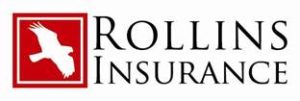 Choosing the right health insurance plan can be a daunting task, especially during open enrollment season when you’re faced with a multitude of options. It’s important to carefully consider your needs and budget to ensure you make the best decision for yourself and your family. In this article, we will provide you with valuable tips and insights to help you navigate the process of selecting the right health insurance plan.
Choosing the right health insurance plan can be a daunting task, especially during open enrollment season when you’re faced with a multitude of options. It’s important to carefully consider your needs and budget to ensure you make the best decision for yourself and your family. In this article, we will provide you with valuable tips and insights to help you navigate the process of selecting the right health insurance plan.
Understanding Health Insurance Plan Categories
Health insurance plans are typically categorized into Bronze, Silver, Gold, and Platinum. These categories indicate how you and your plan will share the costs of healthcare services. It’s important to note that plan categories have no bearing on the quality of care. When comparing plans, consider the following:
- Bronze Plans: These plans generally have lower monthly premiums but higher out-of-pocket costs. They may be a good option if you’re generally healthy and don’t anticipate needing frequent medical care.
- Silver Plans: Silver plans strike a balance between monthly premiums and out-of-pocket costs. They may be a good choice if you anticipate moderate healthcare needs and want a balance between affordability and coverage.
- Gold Plans: Gold plans typically have higher monthly premiums but lower out-of-pocket costs. They may be a good option if you anticipate needing frequent medical care or have ongoing health conditions.
- Platinum Plans: Platinum plans have the highest monthly premiums but the lowest out-of-pocket costs. They may be a good choice if you have significant healthcare needs and want comprehensive coverage.
Assessing Your Total Costs for Health Care
When selecting a health insurance plan, it’s essential to consider both your monthly premiums and your out-of-pocket costs. Here are some key factors to keep in mind:
- Premiums: Premiums are the monthly payments you make to your insurance company, regardless of whether you use medical services that month. Assess your budget and determine how much you can comfortably afford to pay each month.
- Deductibles: The deductible is the amount you must pay out-of-pocket for covered healthcare services before your insurance plan starts to contribute. Consider your healthcare needs and calculate how much you can afford to pay towards your deductible.
- Copayments and Coinsurance: Copayments are fixed amounts you pay for specific medical services, such as doctor visits or prescription medications. Coinsurance, on the other hand, is a percentage of the cost you pay for covered services after meeting your deductible. Evaluate the copayments and coinsurance rates of different plans to determine which aligns best with your budget.
- Out-of-Pocket Maximum: The out-of-pocket maximum is the maximum amount you’ll have to pay for covered services in a calendar year. Once you reach this limit, your insurance plan will cover 100% of the costs. Consider your healthcare needs and ensure that the out-of-pocket maximum is within your financial means.
Understanding Plan and Network Types
Different health insurance plans offer different networks of healthcare providers. It’s crucial to understand the types of plans and networks available to ensure that your preferred doctors and hospitals are included. Here are some common plan and network types:
- Health Maintenance Organization (HMO): HMO plans typically require you to choose a primary care physician (PCP) and obtain referrals from your PCP to see specialists. These plans generally offer lower out-of-pocket costs but limit your choice of healthcare providers to those within the HMO network.
- Preferred Provider Organization (PPO): PPO plans allow you to see any healthcare provider, both in-network and out-of-network, without a referral. While you’ll have more flexibility in choosing providers, out-of-network services may come with higher costs.
- Point of Service (POS): POS plans combine elements of HMO and PPO plans. You’ll typically need to choose a primary care physician and obtain referrals, but you’ll also have the option to see out-of-network providers, albeit at a higher cost.
- Exclusive Provider Organization (EPO): EPO plans require you to use healthcare providers within the plan’s network, except in emergencies. Seeing out-of-network providers may not be covered, except in exceptional circumstances.
Consider your preferred doctors and hospitals, as well as your willingness to receive care from providers outside of a specific network, when selecting a plan.
Evaluating Plan Quality and Ratings
In addition to considering costs and network options, it’s crucial to assess the quality of healthcare provided by different insurance plans. Look for plan quality ratings, which can provide insights into the overall performance and member satisfaction of a plan. You can typically find these ratings on the websites of insurance companies or through state health insurance marketplaces.
Utilizing Online Tools and Resources
Take advantage of online tools and resources to simplify your health insurance plan selection process. Many insurance companies and state health insurance marketplaces offer online tools that allow you to compare plans, estimate costs, and search for providers. These tools can help you make informed decisions based on your specific needs and preferences.
Considering Additional Benefits and Services
Beyond coverage for medical services, some health insurance plans offer additional benefits and services that may be valuable to you. These can include dental coverage, vision care, prescription drug coverage, mental health services, and wellness programs. Assess your personal healthcare needs and consider whether these additional benefits align with your requirements.
Seeking Expert Advice and Assistance
If you find the process of selecting a health insurance plan overwhelming, don’t hesitate to seek expert advice and assistance. Insurance brokers or agents can help guide you through the process and provide personalized recommendations based on your unique circumstances.
Reviewing Plan Documents and Summaries
Before finalizing your decision, carefully review the plan documents and summaries provided by the insurance company. These documents outline the specific details of the plan, including coverage, costs, limitations, and exclusions. Pay close attention to any potential restrictions or conditions that may affect your ability to access certain services or receive coverage for specific treatments.
Considering Your Future Needs and Life Changes
Lastly, it’s important to consider your future needs and potential life changes when selecting a health insurance plan. Think about any upcoming major life events, such as marriage, starting a family, or retirement, that may impact your healthcare needs. Choose a plan that offers flexibility and can adapt to your changing circumstances.
Choosing the right health insurance plan requires careful consideration of your needs, budget, and preferences. By understanding the different plan categories, assessing your total costs, evaluating network options, considering plan quality, utilizing online tools, and reviewing plan documents, you can make an informed decision that provides you with the coverage you need. Remember to seek expert advice and consider your future needs to ensure that your chosen plan remains suitable in the long run.
Contact us (859-781-7283) for more information or get a free quote!
—
 About Rollins Insurance
About Rollins Insurance
Rollins Insurance is an independent insurance agency providing our clients the best prices with the most coverage possible since 2008. We represent multiple A-rated insurance companies to make sure we deliver the most competitive rate packages to our clients in Kentucky and Ohio. We find that most people are under-insured and over-paying when we meet them. We love what we do and our primary business is Personal Auto, Homeowners, and Life and Health insurance. We are a family-owned and managed business that specializes in providing needs-based insurance services.
>> Learn More About Us and Our Staff
